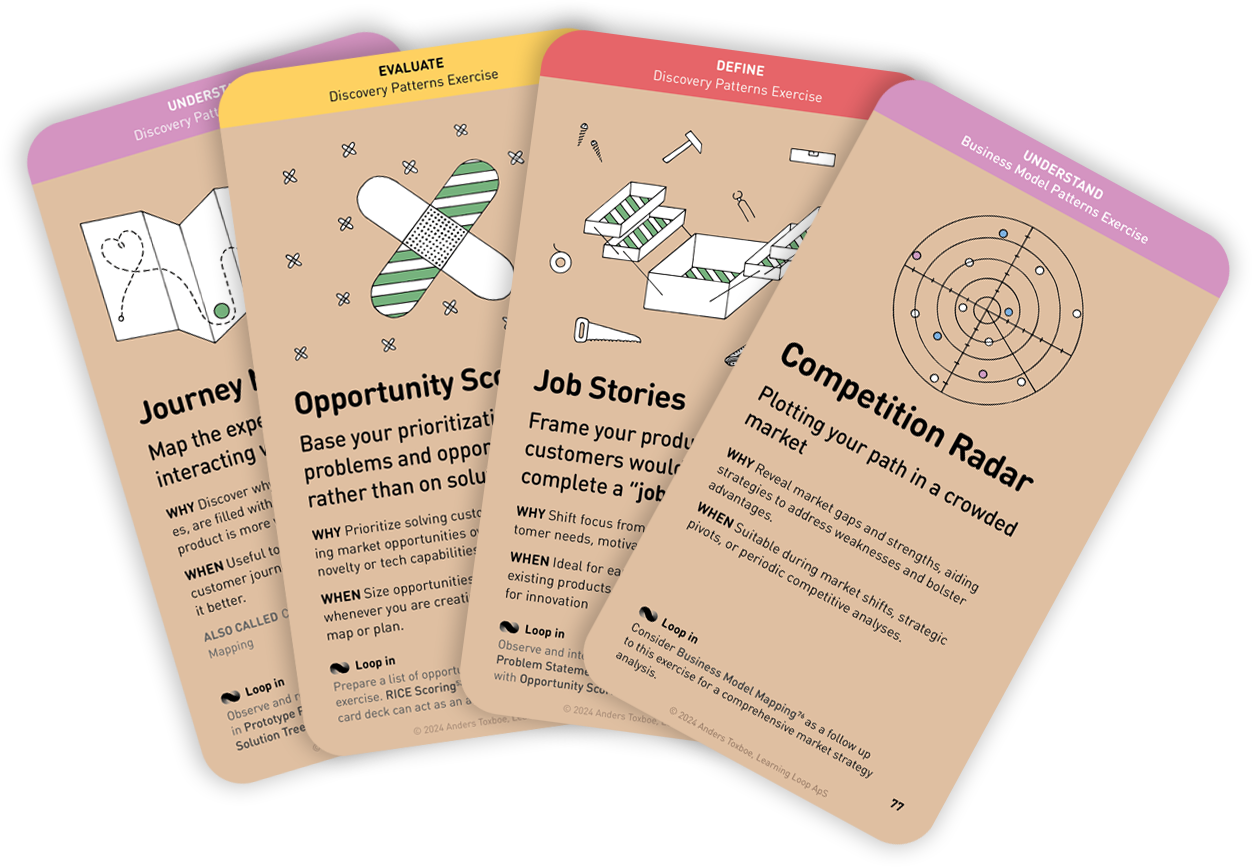Workshop Exercises: Understand
Behavioral Journey Mapping
Map behavioral barriers and enablers in a user experience

Why: Provide a clear visualization of where interventions are needed and what types of interventions would be most effective
When: Apply for detailed understanding of user behaviors and motivations in designing solutions
Use a visual representation to understand the user’s journey, focusing on behavioral elements, psychological barriers, and biases that a user encounters. By integrating behavioral insights into journey mapping, this exercise offers a richer, layered understanding of both visible and invisible pain points and opportunities that users encounter, providing a clear and strategic path to interventions.
Traditionally, journey maps have been instrumental in highlighting the tangible barriers and touchpoints users encounter. However, extending journey mapping with a behavioral perspective allows intangible elements such as psychological barriers, biases, and underlying motivations to be incorporated. This helps facilitate a nuanced understanding of the factors, both overt and covert, that influence user behavior, providing a richer, more layered insight into user experiences, needs, and pain points.
By adding variables like psychological enablers and barriers to the vertical axis of the journey maps, we can illustrate the key influencers of behavior, visualizing both pain and possibility within a user’s journey. This not only accentuates the multifaceted nature of user interaction but also emphasizes the interplay between different elements in shaping user experiences.
The heatmap generated highlights concentrations of barriers and opportunities. It offers insights that might not be directly expressed by the users themselves, acting as a mirror reflecting the unspoken, the unseen, and the unexpressed elements of user interaction.
Instructions for running this play
- Setup
Draw the following on a large surface and post sticky note a and b, where a is the starting point of the user and b is the target behavior:

- Identify steps
Conduct a 10 minute individual silent brainstorm with the group, letting participants write down the steps a user takes before, in between, and after point a and b on separate yellow sticky notes. When done, have participants place the sticky notes on the horizontal journey axis, combining any duplicate steps. - Discuss
Discuss each note and its position on both x and y axes. Your goal is to emphasize, highlight, and elaborate critical intersections between customer expectations and business requirements. - Extend the vertical axis with two rows: Enablers and Barriers

- Identify enablers and barriers
Conduct another 10-minute individual silent brainstorm to list psychological barriers (on red sticky notes) or enablers (on green sticky notes) users might face. Place these notes next under the appropriate step. - Write Behavioral How Might We… ** questions for the steps with the most critical barriers and promising enablers, using the **Persuasive Patterns card deck to suggest solutions.
Tips to perfect this play
Master and adapt the play to fit your context and needs.
Tip
Start by mapping both physical and psychological steps toward the desired behavior.
Tip
Use the COM-B model to code research insights at each stage of the journey.
Tip
Identify and color-code enablers and barriers according to the COM-B structure.
Tip
Visualize barriers and opportunities to create a heat map for focused interventions.
Tip
Design evidence-based interventions at points where they will have the most impact.
A collection of workshop exercises that will help you ditch dull meetings and facilitate with confidence. It will help you master the design process and have more productive time with your team. The card deck will be ready for purchase in the end of 2026 and is now undergoing rigorous testing.
Reserve your deck!- The 5 Rules of Behavioral Journey Mapping by Colin Shaw at Beyond Philosophy
- Behavioural Journey Mapping: Designing Context-Sensitive Interventions by Iranzu Monreal at The Behaviouralist
- Mapping Behavioural Journeys by Common Thread

